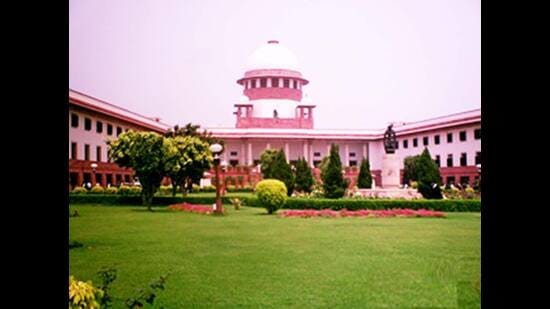Top court ruling on SC subcategories to have twin implications on Haryana
The apex court rules that a 1994 Haryana government notification by which the scheduled castes in Haryana were classified into two categories for reservation is also valid.
The seven-judge constitution bench judgement of the Supreme Court allowing sub-classification of scheduled castes by the state governments will have twin implications on Haryana. The apex court judgement held by a 6:1 majority that a 1994 Haryana government notification by which the scheduled castes in the state were classified into two categories – block A and B — for the purpose of reservation is also valid.

The notification creating a sub-classification among the scheduled castes was quashed by the Punjab and Haryana high court on July 6, 2006. The special leave petitions challenging the 2006 HC judgement before the Supreme Court were tagged with the appeals involving the challenge to the Punjab Act. Senior counsel Arun Bhardwaj, who appeared for Haryana, had submitted before the apex court that there were disadvantaged groups within the scheduled castes and the state should be allowed to alleviate their concerns. The top court’s judgement has also granted legitimacy to a 2020 law enacted by the Haryana government to bifurcate 20% quota for scheduled castes in higher education institutions by setting aside 50% of the reserved seats for a newly created category, the deprived scheduled castes.
Haryana senior counsel Arun Bhardwaj told HT that though the Supreme Court did not deliberate on the Haryana scheduled castes (reservation in admission in government educational institutions) Act, 2020, it has been legitimised by implication as the apex court held that the state governments have the power to do sub-classification of scheduled castes (SCs) for the purpose of reservation.
What was Haryana’s three-decade old move on sub-classification of SCs?
On November 9, 1994, the government classified Haryana’s scheduled castes into two categories. The block B consisted of Chamars, Jatia Chamars, Rahgars, Raigars, Ramdasias or Ravidasias while the block A consisted of the remaining 36 castes in the list of scheduled castes for the state. Within the scheduled castes’ quota in direct recruitment for government jobs, 50% of the vacancies each were to be offered to both categories.
The 1994 notification further stipulated that in case suitable candidates from block A were unavailable, candidates from block B should be recruited against those vacancies and vice versa. The notification was challenged in the high court that quashed the notification on July 6, 2006 , citing the Supreme Court judgement in EV Chinnaiah case. Haryana government’s senior counsel Arun Bhardwaj said the apex court’s order allowing subclassification and overruling the EV Chinnaiah judgement made the 1994 notification valid.
Haryana’s law on sub-classification, review of creamy layer
The Haryana government in 2020 enacted a law, the Haryana Scheduled Castes (reservation in admission in educational institutions) Act, to set aside 50% of the 20% seats reserved for scheduled castes in higher education institutions of Haryana for a new category, the deprived scheduled castes. The sub-classification is applicable for graduation and postgraduation-level courses in educational institutions maintained by the government or receiving aid out of the state funds. It also included government and government-aided technical and professional institution.
Justifying the sub-classification, the statement of objects and reasons of the Bill mentioned that an analysis of employee data revealed that the total representation of a section of the scheduled castes in Haryana government jobs comprising 36 castes designated as deprived scheduled castes was only 4.7%, 4.14% and 6.27% in group A, B and C services respectively, even though their population is about 11% of the total population of the state.
“It is further revealed that the population of other scheduled castes in Haryana was also about 11% of the total population but their share in government jobs was 11%, 11.31% and 11.8% in group A, B and C, respectively. The reason for poor representation of the deprived scheduled castes in government jobs is also revealed by the education data collected in socio-economic caste census (SECC) survey of 2011,” the statement said.
It further said the minimum prescribed educational qualification for majority of the posts of group A, B and C services in Haryana was graduation. The SECC data revealed that in terms of education, only 3.53% population of the deprived scheduled castes is graduate, 3.75% of them are senior secondary level and 6.63% are matric/secondary level. Also 46.75% of them are illiterate.
“The social and educational backwardness of this section of scheduled castes make them a distinct class of citizens, who are deprived the constitutional right to equality of opportunity in comparison with the general scheduled castes population due to lack of education. The deprived scheduled castes are not able to compete with other scheduled castes in respect of government jobs,’’ the Bill said, justifying the sub-classification.
The state government has assured a periodical review to make sure that the creamy layer is excluded from the benefit of reservation by verifying the backwardness of each of the deprived castes and include or exclude such castes as may qualify the creamy layer criteria.






